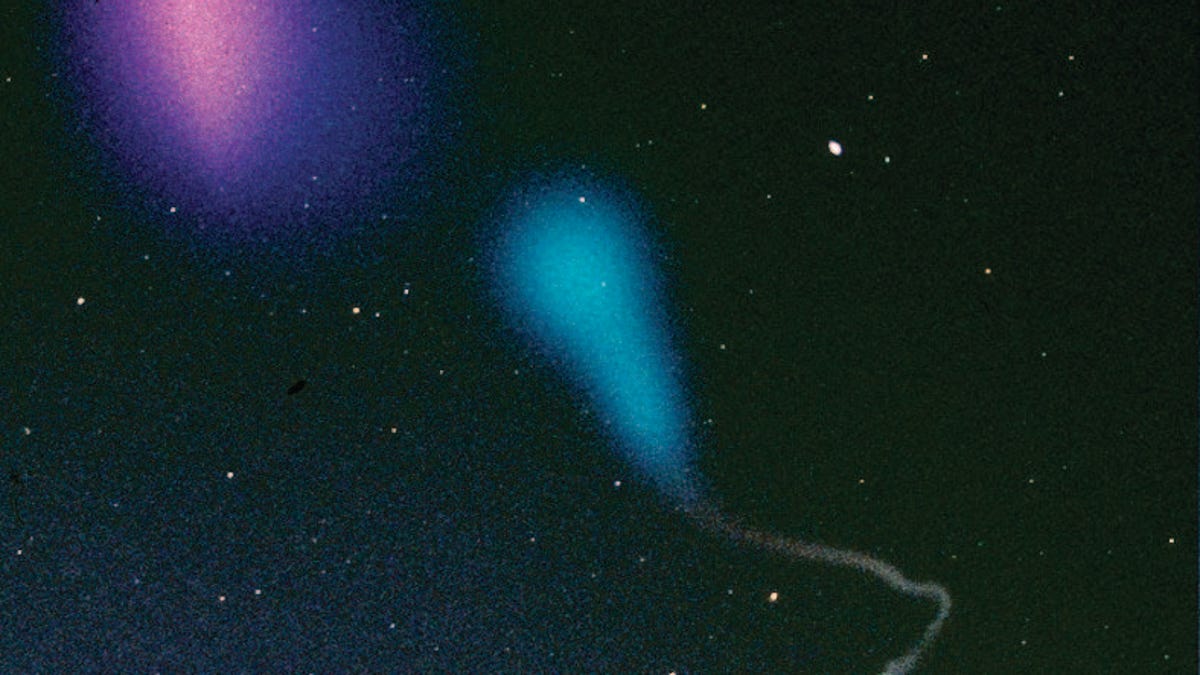NASA will try again to make fake clouds on the East Coast
The previous launches didn't happen because of weather and wayward boats. But NASA's trying again.

A combination of artificial clouds created by released vapor tracers.
Update, June 13, 9:15 a.m. PT: The rocket launch has been postponed again. The next attempt is set for Tuesday from 9:04 to 9:19 p.m. ET.
Sixth time's the charm? NASA sure hopes so.
The US space organization will try, yet again, to launch a rocket from the Wallops Flight Facility in Virginia to make fake clouds along the East Coast. The aim of the launch -- slated to take place Monday between 9:04 p.m. and 9:19 p.m. ET -- is to test a new system that helps scientists study auroras and the ionosphere.
If the launch goes as planned, a NASA sounding rocket (a small, sub-orbital rocket often used in research) will release several soda-size canisters of vapor tracers in the upper atmosphere that may appear as colorful clouds. The clouds may be visible from New York to North Carolina and westward to Charlottesville, Virginia.
The tracers use vapors made up of lithium, barium and tri-methyl aluminum that react with other elements in the atmosphere to glow, letting researchers visually track the flows of ionized and neutral particles. It's a bit like being able to dye the wind or ocean currents to be able to get a visual picture.
So far, NASA hasn't had the best luck with the launch. The experiment was originally set for May 31 but has been postponed five times because of weather -- it can't be too windy or cloudy -- and wayward boats in the launch area.
NASA's optimistic tonight will work. Keith Koehler, a spokesman for NASA, said weather forecasts so far indicate good weather conditions for the launch, and NASA's sending alerts to fishermen and others in the area to make sure they're away from the launch site. It's also sending two surveillance aircraft into the sky instead of one to search for any boats in the area and ask them to move.
NASA plans to launch this rocket off the Virginia coast to create fake clouds.
NASA will wait until the last possible minute -- literally -- to call off the launch, if the conditions aren't right.
If Monday's launch is again postponed, NASA has until June 18 to complete the experiment. It's launching another rocket June 22. Because that one's for educational purposes, the requirements for clear skies aren't as strict. If the previous launch doesn't happen before June 18, NASA will reassess the next steps, Koehler said.
Assuming tonight's launch happens, you can watch it live via NASA's UStream feed. To look for the colorful clouds from the East Coast, point yourself in the direction of the Virginia coast from wherever you are. The further away you are from Wallops, the lower in the sky they'll be.
CNET's Eric Mack contributed to this report.
First published June 12, 11:44 a.m. PT.
Update, June 13, 9:15 a.m. PT: The rocket launch has been postponed again. The next attempt is set for Tuesday from 9:04 to 9:19 p.m. ET.
Tech Enabled: CNET chronicles tech's role in providing new kinds of accessibility.
Batteries Not Included: The CNET team reminds us why tech is cool.

